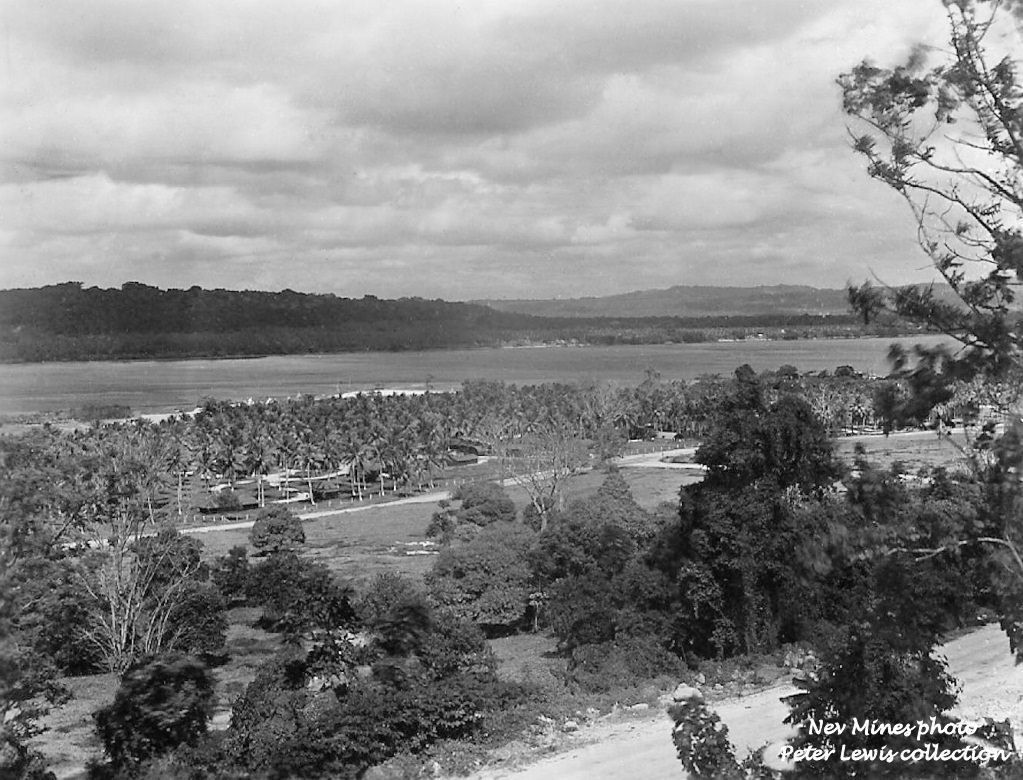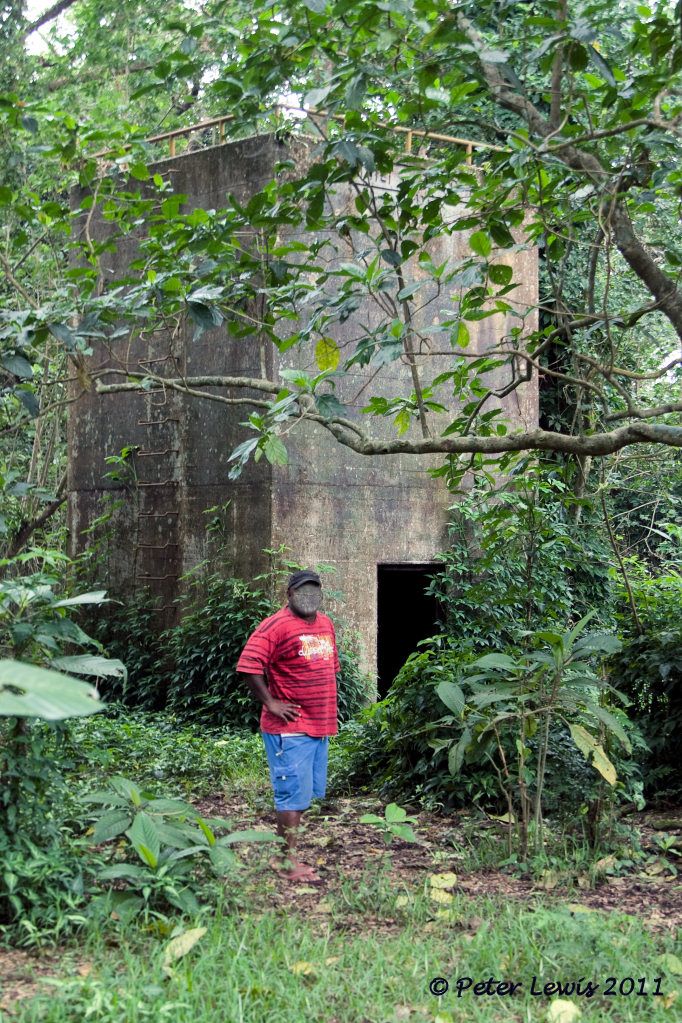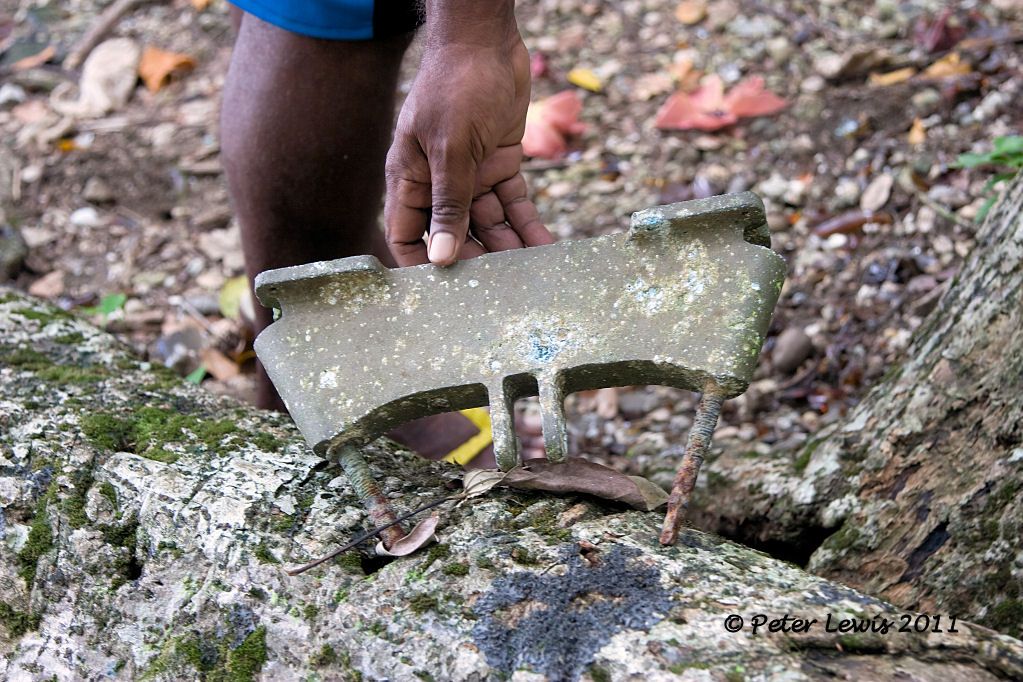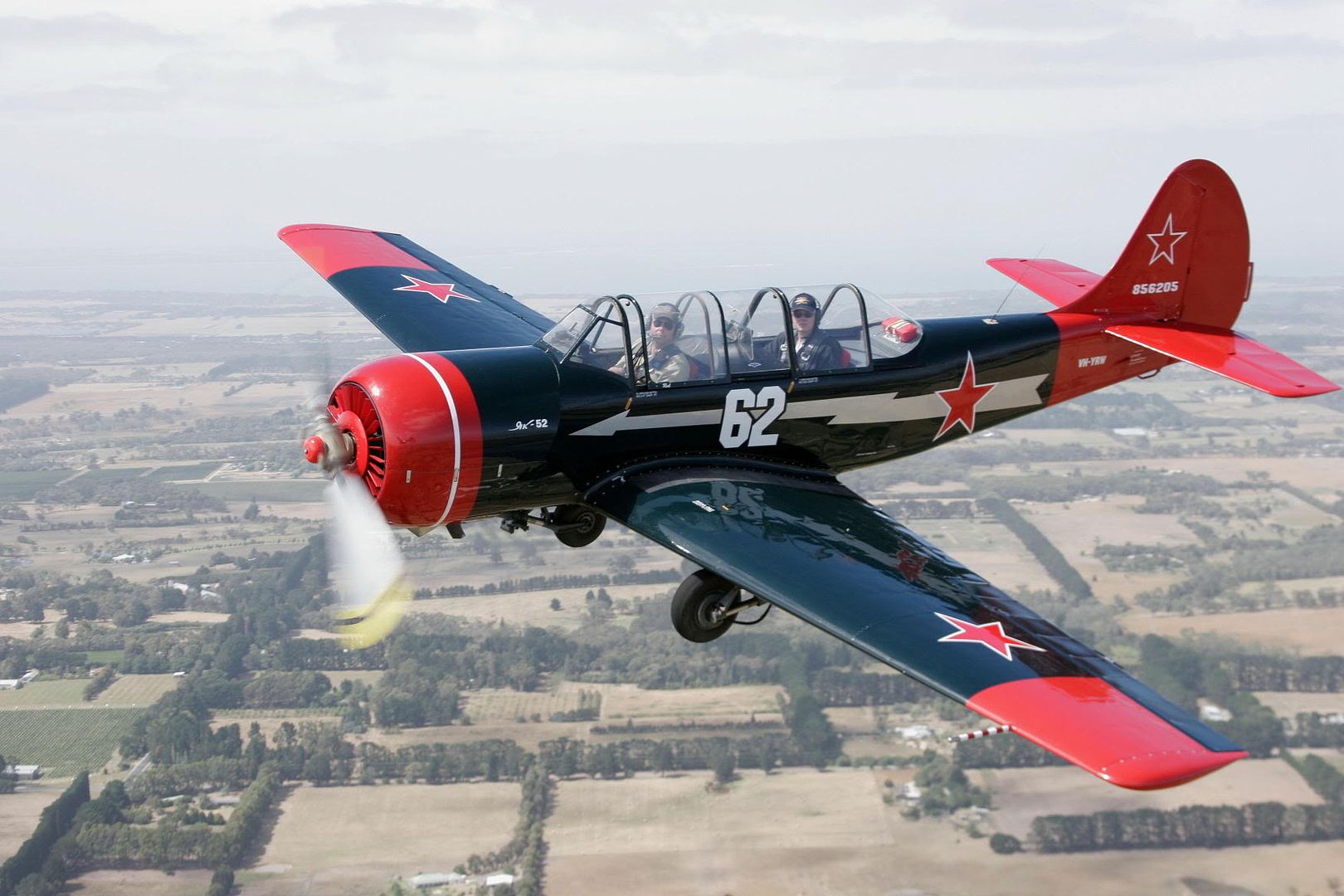|
|
Post by Peter Lewis on Aug 2, 2011 19:33:35 GMT 12
A seaplane base was established in 1943 on the shores of the Segond Channel, south of the Luganville township at Belchif Point alongside the estuary of the Wambu River. "For a seaplane base, the 7th Battalion constructed a parking area, two pre-fabricated 85-by-100-foot nose hangars, warehouses, quonset huts, and two seaplane ramps in Segond Channel."  Seaplanes were an essential feature of the war in the Pacific. Apart from their ability to patrol vast areas of ocean, they were vital for rescue work. At this time, in an area larger than continental Europe, there were around 15 'friendly' airfields available to Allied aircraft. Consequentially standard practice for any allied aircraft in trouble was to head out to sea, radio position details, and ditch. The nearest Catalina base would then hopefully dispatch an aircraft to effect a rescue. The RNZAF had acquired 56 PBY-5 and PB2B-1 Catalinas under lend-lease from mid-1943. They were all Seacats - pure flying boats not amphibians. 6 Squadron was declared operational with Catalinas at Fiji in August 1943 and moved to Santo the following October. They then moved on to Halavo Bay in the Solomon Islands in December 1943. 5 Squadron acquired their Catalinas in Fiji July 1944 and moved to Santo in October. Moving back to Lauthala Bay, Fiji, in November 1945 they retained a detachment at Santo until the following year. RNZAF Catalinas at the Segond Channel Base during this time   Above photos via Nev Mines Above photos via Nev MinesNaturally, I was keen to visit this area and investigate what remained on the site after all this time. However, all land in Vanuatu belongs to someone, even the waterfront. No 'Queens chain' of public property here. I was firmly told that access to this area was not available. You can drive along the public road and cross the Wambu River bridge, but that's as close as you can get. The owners are not willing to allow any visitors As usual, I wailed and bemoaned my fate. Here I was, so close and yet so far. I had come 1500 miles and could go no further. My wife, who is well used to my moods, took a more practical approach. She spoke to a waiter. The waiter had a second cousin who just might have a friend of a friend who could possibly arrange something. So there was a clandestine meeting in a back alley by the light of the moon. Promises were made, gold and virgins changed hands. (OK, I'm exaggerating a bit here, but you get the drift). A covert early morning operation was arranged, a quick silent stealthy in-and-out promised. Stand by for the next gripping update. |
|
|
|
Post by Dave Homewood on Aug 2, 2011 20:17:53 GMT 12
Those are super photos of Segond Channel.
|
|
|
|
Post by Peter Lewis on Aug 3, 2011 17:47:59 GMT 12
First light the following morning we sneak along the coast road, pausing only to admire the sunrise over Belchif Point. The beach just to the right of the point is our intended destinantion  At the river, we abandon the car and take to foot power. The site is well overgrown, and some of the plants are a bit dangerous. The broad leaf ones are Dendrocnide spp, known locally as Nangalat or nettle tree. This is a variety of stinging plant that thrives in Vanuatu. If you brush against the leaves it will give you a painful rash that lasts about a fortnight. Avoid.  The first artifact we come to is the control tower, being concrete it is about the only structure on the site that has survived.  Feeling a bit like a participant in Raiders of the Lost Ark, I investigate further. The steel ladder rungs have rusted to the point where they would be unsafe to climb  The makers have left their mark - 40th Construction Battalion 1943  Working our way down to the waterfront entails paddling through a swampy area  and we eventually arrive at the beach  First stop there is at the remains of the wartime wharf   Alongside this structure is one of the two seaplane launching areas, with the marston matting still visible in places. Seems to be a Catalina strut in there as well.  Back behind us, the area where the seaplane station was active is now heavily overgrown. However, some of the concrete tie-down are still visible  Some debris, mostly related to ground handling equipment, lies scattered among the trees  The beach is also littered with rusty artifacts   Seems to be a wheel off Catalina beaching gear   Resisting the urging of my guides to 'grab a souvenir', we return to the public road as silently and as quickly as possible. Operation Stealth is over. We stop for a breather on the Wamba River bridge. I think I am the wrong shape to be Doctor Jones, I'll leave that to Harrison Ford.  |
|
|
|
Post by angelsonefive on Aug 4, 2011 16:58:58 GMT 12
Thanks Flyernzl for a brilliant thread. The names that I have come across in my research ( if I can call it that) into RNZAF accidents in WW2 have been brought to life. Segond Channel, Palikulo Bay, Pekoa etc. Wonderful stuff. With regard to the Corsair in the sea off Efate. US Navy losses for the 5th of May '44 shows US Marine 2nd Lt Vittitoe's plane but mentions no other Corsair losses at Efate on that day. I can only assume that the other Corsair ditched on another date. www.aviationarchaeology.com/src/USN/LLMay44.htm |
|
|
|
Post by Peter Lewis on Aug 4, 2011 20:21:33 GMT 12
Thank you. Yes there is nothing quite like a personal visit to bring the location alive. A second seaplane base, Sarakata, seems to have been established near what is now the town centre judging by this January 1944 chart. Presumably it was only used by smaller seaplanes than the PBY base at Belchif. The area would now be part of the modern harbour installations. The callsigns of the various airfield control towers are interesting.  That, folks, is about all that I got. I would recommend that you get hold of a copy of Tales of the South Pacific by James Michener. You will no doubt know of the movie South Pacific, but this is taken from just one of the stories in that book. A lot of the stories are semi-autobiographical, and as Mitchener was stationed in Santo for some time he gives quite a good account of life as a navy stores officer in the area at that time. In Santo, locals will show you the catholic church, the hospital (now a school) and the location of various other places he mentions in the book. If you do get the chance for a Vanuatu trip, grab it. There are a lot of good things about the place and they have an interesting history. Also there is obviously scope for a lot more in-depth research on the WW2 aviation scene than I have been able to cover here. Many thanks to Shorty, Ozjag and Seaplane Paul for their invaluable gen plus those locals who helped. In the meantime I'm off to the nearest dead airfield (as my wife calls them) to hitch a lift home  |
|
|
|
Post by aileronroll on Apr 17, 2012 12:38:42 GMT 12
Flyernzl.
Have just finished reading your fasinating posts! I depart to Santo for a 12 day diving trip next Friday. I have spent so much energy researching the diving(which looks just magic) that until now I had no idea there was so much aviation stuff to look at between dives!
thanking you!
|
|
|
|
Post by Peter Lewis on Apr 17, 2012 21:41:47 GMT 12
Glad to be of help.
I'm jolly sure that there is a lot more to uncover in this area if someone has the time and the enthusiasm to devote to it.
|
|
|
|
Post by campbellbox on Jan 14, 2014 10:37:52 GMT 12
I visited Vanuatu recently, but I only remembered this thread existed after I was "in country". Luckily there was wifi at all the places we stayed (albeit at times a bit slooooooow) so I was able to use this as a bit of a travel guide to supplement our Lonely Planet. On Santo we were lucky enough to be staying at Turtle Bay Lodge which by chance has a relationship with some locals who have a crashed B26 on their land in the highlands. So after an hour or so in the back of a ute, picking up locals along the way, and another half hour walk through the jungle we came across the wreck. Apparently the bits we saw have been dragged from various places and arranged over a smaller area by the owners. There is quite a lot of the wing left, but almost nothing of the fuselage.  This is one of the main wheels and other debris.  Plaque on one of the engines. The story goes the the aircraft was Kansas City Kitty which flew from New Caledonia, got lost and ran out of fuel. The crew bailed out and all but one were rescued. If anyone knows any more I'd be interested. I have some more pics, but mostly they involve me standing in front of the interesting bits. We finished our stay on Efate and snorkeled over the Corsair wreck the aerial photo of which Peter posted. Unfortunately by that stage our underwater camera was on the fritz so I did not get any pictures of it. I was surprised at how well preserved the airframe is. The cockpit has been gutted, but apart from that, the crash damage and the odd bit of coral it looks in remarkably good shape. The little museum they have there also has some pieces of a P39 and a photo of an RNZAF Corsair, together with various bits and pieces left behind by the US and allies. Even without the historical side of things Vanuatu is a great place the visit, the people are friendly, the snorkeling is great and the temperature is perfect if you like the dial set to Tropicalio and the humidity turned up to 11. |
|
|
|
Post by davidd on Jan 16, 2014 10:13:45 GMT 12
Intrigued by the name plate above - it is quite probably a fuel pump - see extract taken from internet (below) which is from a court case in the early 1950s.
"On October 1, 1946, Gammel was serving other Wright corporations, including Seminole, but Candler-Hill was the only one paying him any compensation, so Candler-Hill as of that date, increased Gammel's salary to $1,000 per month.
"During World War II Candler-Hill had manufactured fuel pumps for aircraft. Its plant was in Detroit, Michigan, where it maintained up to 1,000 employees. It was successful as a war operation, but with the advent of peace it became very unsuccessful. It promptly scaled down its operations so as to employ only about 200 people, but, nevertheless, it lost large amounts of money in 1946, 1947, and 1948. At the end of 1948, it had accumulated adverse creditors' claims in excess of half a million dollars and was in a seriously insolvent position. The management of Candler-Hill in this situation was under the necessity of striving to accomplish two things: (a) to carry on the manufacturing operation so economically and so efficiently as to convert operating losses into profits, and (b) to hold off creditors long enough to enable such profitable operations to restore the concern to solvency."
And that may well have been the end of this corporation!!
|
|
|
|
Post by Peter Lewis on Mar 18, 2015 19:19:29 GMT 12
I am saddened by the reports coming in of the devastation caused to Vanuatu by tropical cyclone Pam just a few days ago.
It would seem that Efate has been very badly damaged, but I think Bauer field is still operational.
The southern island of Tanna has been comprehensivly flattened. Estimates of 70 to 80% of the buildings there being destroyed.
I have not seen any reports of damage to Santo. Being quite a bit further north it may have escaped the worst.
I would assume that any aircraft that failed to escape would have been destroyed, as hangarage in Efate is extremely limited, and non-existant elsewhere.
My thoughts go out to the people there.
If you can donate to any of the charities that are helping out on the ground, please do so.
|
|
|
|
Post by Dave Homewood on Mar 18, 2015 20:00:14 GMT 12
Yes it is really sad. I did hear on the National Radio during the storm that Santo was reportedly really copping it, but i haven't seen anything of the results.
|
|
|
|
Post by oj on Mar 18, 2015 20:37:21 GMT 12
Yes it is a terrible mess the cyclone has left the people and country in, but "it is an ill wind that blows nobody any good".
For the aviation archaeologist there may now be some areas of devastated jungle that expose previously hidden wrecks.
I suppose Google Earth refresh their images from time to time?
|
|
|
|
Post by harvard1041 on Mar 18, 2015 21:31:20 GMT 12
Yes - really sad deal with PAM ... many of the poorer people have nothing to start with, and then a big old storm comes along.
Just donated yesterday - hope it makes it to the right people 
Lived and worked in Vanuatu back in 1991-92 with the airline - good times & good people, my heart goes out to them.
Believe NZ should send a lot more help up there than they have - get a couple of choppers up there asap - so that aid can be taken directly to the outlying islands... or it will sit & rot on the airfield in Vila.
Cheers
Hvd1041 |
|
kiwiwreckdiver
Squadron Leader
   Still military and aviation history mad
Still military and aviation history mad
Posts: 124
|
Post by kiwiwreckdiver on Mar 30, 2015 5:21:49 GMT 12
Was up there during the Cyclone. Man did Pam tear the place up. Found a couple wrecked Corsairs up on the reefs around turtle bay, including the rear end of a TBF Avneger in 3 meters. The B17 wreck short of the main airport runway was banged up pretty badly with a number of trees falling on her. Every time I see pics of the site there is less of that wreck due to the Chinese scrappers in town taking it away bit by bit. The Coolidge was a fantastic wreck and even got a nicee parachute flare off her still with the chute inside.  |
|
|
|
Post by baz62 on Mar 30, 2015 11:36:09 GMT 12
including the rear end of a TBF Avenger I recall Anthony Galbraith going on a holiday to (I think) here and showed me a photo of the Avenger rear sitting in the shallows. Certainly a lot of wrecks (of all kinds) to see, shame they are getting a battering by Mother Nature. |
|
|
|
Post by baz62 on Mar 30, 2015 11:37:50 GMT 12
The P40 under restoration at Wigram was recovered from Vanuatu. It was originallya Merlin powered model, and from memory had been involved in a bad weather/low fuel accident. There were two weren't there? Wasn't the airworthy P40F in Australia also from there (and from the same unit?) |
|
|
|
Post by efliernz on Mar 31, 2015 8:57:05 GMT 12
A couple of Kiwis are helping with low-altitude UAV mapping and damage assessment at the moment - joining with the Aussies. Today he's heading down to Tanna where there has been no food for two weeks. The Govt has removed the "disaster" status due to political BS with the overseas aid agencies... and he sees the big aid agencies driving around in new Santafe SUVs with their clipboards while the aid sits in containers. Their blog is here for the reading... diydrones.com/profiles/blogs/pictures-humanitarian-uav-mission-to-vanuatu-in-response-toPete |
|
|
|
Post by rebel1222 on Oct 14, 2017 6:21:54 GMT 12
Thank you so much for this thread of awesome photos and information.. I have alwasy been fascinated by the Turtle bay airstrip, since reading the history of VMF -214.. thank you for the photos of that field... I'll probably never be able to travel to this place so the photos are much appreciated...
|
|
|
|
Post by Dave Homewood on Sept 4, 2024 16:18:36 GMT 12
I came across this article from The Press, dated 23 August 1969. It may be of interest:
Espiritu Santo, a Tropical Outpost
(By KATHLEEN HANCOCK)
Espiritu Santo—a lovely name for a lovely island up in the New Hebrides. The locals shorten it to Santo, and till recently it was known only as the jumping off place for United States and New Zealand troops in the Pacific war.
The miles of navy docks built in 1942 have rotted and tumbled into the sea; the thousands of acres of vegetable gardens established to feed allied troops have been swallowed up by the jungle.
But you can still see the imprint of the Pacific War on this sleepy little tropical outpost.
The roads built by the Americans during the war still function. A ride by jeep-taxi into the countryside behind Santo will take you through jungle as thick as any in the world—but here and there is a reminder of Santo’s hectic few years as a war-time base.
Old ammunition dumps, now empty, rust beneath the jungle's weight In the town itself, airstrip matting has been put to uses its inventor never dreamed of. It’s used for bridges, fences, hen-runs, pig-styes. There’s a garage on Santo’s main street that's built entirely of the stuff that used to get a pilot on or off a boggy runway.
And the Nissen hut is everywhere—fashioning hotels, shops, dwellings, warehouses. It would be a terrible thing if this ever changed—Santo is a museum piece with a scruffy atmosphere all its own.
The Hub of Santo
In Santo you have the choice of two hostelries. Each in its way is unique. The Corsica was once the worst hotel in the South Pacific. But a new day has dawned. Alan Brown, one-time accountant at the big British trading store in Santo, has taken over management of this intriguing establishment But, he hasn’t changed it too much, praise be. He’s filled in the open drain that used to run right round the place.
The shabby, scrofulous walls have been cleaned up and painted. Nice use has been made of the rare Santo pots for indirect lighting—odd artifacts have been discreetly used as decoration in the lounge-bar.
In the bedrooms that open on a pleasant courtyard, the change is even more dramatic. They’re fresh, they’re clean. The handbasins once ringed with the grime of innumerable occupants, are white and shining: the showers spotless. And the plumbing now works.
The food was always good, even in the bad old days. But now it’s fabulous. The Corsica, built of Nissen hut and three ply, is real Somerset Maugham stuff—these days without the squalor. It’s become the hub of Santo planters, traders, administration officials foregather there nightly for a drink or dinner.
Mao's is the other hotel in Santo—though it’s really a bar that caters for a few permanent boarders and can also accommodate the odd tourist. You walk in off the street, through the big, airy lounge bar on to a terrace overhanging Santo’s lovely harbour. The moderate tariff is all in, and while you’re there you’ll be cosseted and cared for by Pauline Mao and Mao—no-one has ever discovered his first name.
These warm-hearted Tahitians are typical of Santo. When you come in late in the day, tired after a long trek up country, Pauline will send her little house-girl to ask: “You want small tea?” Washing given to Pauline in the morning comes back late afternoon. The ambiance is strictly informal, but the place is spotless and the food is good.
Exciting Safari
With Santo as a base you can see the real South Pacific. Air Melanesia can arrange a half hour flight to Malekula where their safari trip across country into the Big Nambas country is exciting stuff involving an overnight stop-over in a native rest house. The Big Nambas are the most primitive tribe in the New Hebrides. Ex-cannibals (some people cast doubts on the “ex"!) these people live exactly as their ancestors did 1000 years ago.
Strongly fortified villages are built high in the mountains and the ‘tribe welcomes visitors these days, though it’s not so long since a foreigner would more likely than not have ended up on a spit above a fire of coconut husks.
If your tastes are a little less rugged, a day trip up to Hog Harbour and Port Olry will show you some of the loveliest coastlines in the Pacific. Sandy beaches the colour of icing sugar curve round tropical waters where nature's paint-box has been given full play: jade, aquamarine, azure blue—the lagoons are breathtaking.
Big things are breaking at Hog Harbour where a United States-Hong Kong syndicate plans a resort complex that will include hotels, both luxury and modest, private beach properties, a yacht club, every kind of sporting activity—all this on a superb beach front rising up to two plateaux. This will be no skyscraper job—no building above 36ft is going to be permitted and every construction—large or small —must be approved of by the Honolulu architect.
Melanesian Culture
The New Hebrides group is a happy hunting ground for artifacts—bamboo flutes, delicately incised, from Malekula; wooden effigies from Ambrym Island. Beautiful bags are woven on Pentecost; and you’ll find rare shells from all over. In Santo township La Boutique is the place for this kind of interesting souvenir and not the least intriguing thing about this little shop is the owner, Marcel Moutuh.
Moutuh’s father was French, his mother Vietnamese, and 11 years in Santo on top of a background of painting in Paris have given him a knowledge of these islands and their people that’s hard to match. Ask to see his paintings, talk to him about Melanesian culture. He has magnificent photographs of primitive village life—a meeting with Moutuh is a high spot if you really want to learn about Santo.
Santo may be small, but it’s never dull. Fifteen nationalities can be counted in its census. You’ll meet planters, traders, missionaries and government officials. There’s nearly always an odd scientific party mooching about these islands, and sometimes you’ll run across a camera team from Europe or the United States. Vulcanologists turn up to investigate the accessible live volcanoes on Ambrym and Tanna—you can fly to these islands yourself if your interests lie in that direction.
In 1934, Tom Harrison, anthropologist and explorer, lived with the North Santo people for a year. It cost him $8. The casual visitor in 1969 will spend a bit more than this for his bed and board. But if he’s receptive to an ambiance that soon takes over, even in Santo township, he’ll find himself echoing Harrison’s words: “their food and sleep, kava, mealtimes and laughter suited me.”
|
|






































